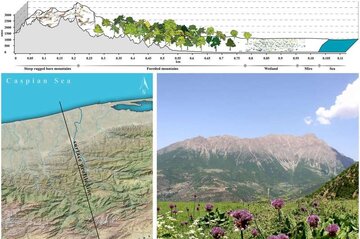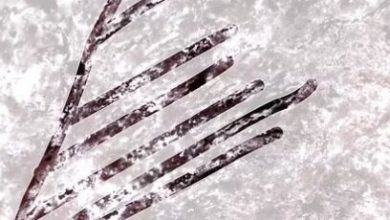Parisa Abbasi This article, published in the journal PLOS ONE, is a computer modeling tracing of Neanderthal dispersal along hypothetical routes north and south of the Caspian Sea based on available archaeological and physiological data. Locating these pathways means new mysteries can be found in less well-known regions of Iran and Central Asia, where these models predict unique Paleolithic habitats.
In the genetic study previously conducted by the Max Planck Institute for Evolutionary Anthropology, the presence of “Neanderthals in Central Asia and Siberia” was mentioned. But the important question is: How did these people get there?

Mapping the route traveled
Using the free software for Geographic Information System (QGIS), a classification of vital geographic information, taking into account past weather conditions, the researchers are looking to build a model that can find the lowest-cost, hazardous path (Least-Cost-Path: Find LCP) for them.
LCP models do not always provide a straight path, but look for paths that are safe and free of obstructions. Just like GPS or car navigation systems, they don’t always show a straight path to get you to your destination, but they may divert you slightly to avoid traffic and possibly congestion caused by road construction. GPS cars choose the route based on the shortest time required to reach the destination. LCP models also select human movement trajectories based on weather conditions, resource availability, and biological and subsistence benefits.
The researchers used LCP analyzes to model possible Neanderthal migration routes between two known ancient caves in the Qafqaar (one containing cultural material from the Mycoccian period and the other from the Mousterian period). These two caves are located in the Altai region of Russia. Check this out The two groups of cultural material show the difference in tools and artifacts at these two places (which lie adjacent to the high Mykoken Mountains to the north and the Mousterian Mountains to the south) and may indicate the migration of two distinct lineages of Neanderthals in and out of the region.
(It should be noted that cultural materials or Material culture, artifacts and ecosystems, such as objects and architecture, and the physical remains of an ancient society. Archaeologists and anthropologists From material culture to knowledge of behaviors and moresrituals of ancient peoples.)

Researchers use and download information from the site PaleoClim.org And other sources of information, I looked for areas that experienced the least fluctuations in climate and were most likely to have been safe and stable environments for flora and fauna. They focused their research on the southern course of the Caspian Sea. Because compared to other places, this region was an ideal area for life expansion and settlement due to the moderation and humidity of the air.
Great as this route was for leaving Europe, it may have been a suitable gateway for the migration of modern humans (Homo sapiens) who traveled from Africa through the Levant. There is a possibility that it was a place of important cultural settlement between two types of people.
Neanderthals were the most modern humans in Europe hundreds of thousands of years ago. They created cave art, cared for their patients, were able to use fire to produce heat and cook, and as hunter-gatherers, hunted the largest game. Also, they were the most widespread type of human of their time. Their spread was from the most western and northern parts of Europe to southern Palestine, and from the east they spread to Central Asia and Siberia. What we know from studying the history of our genome is that modern humans interbred with Neanderthals many times and in different places, which makes Neanderthal history a big part of our story.
Source: Phys
5858









